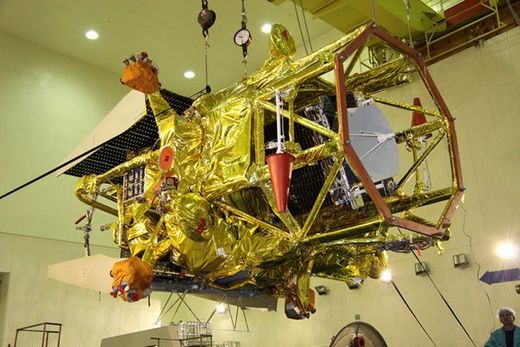
© Naval Research Laboratory/NASADetector. The Fermi telescope, visible here as the large silver "box" atop the satellite, has confirmed an anomalous antimatter signal in the cosmic ray spectrum.
In 2008, the Italian satellite PAMELA picked up an unusual signal: a spike in antimatter particles whizzing through space. The discovery, controversial at the time, hinted that physicists might be coming close to detecting dark matter, an enigmatic substance thought to account for 85% of the matter in the universe. Now, new data from NASA's Fermi Gamma-ray Space Telescope confirm the spike. Alas, they also undermine its interpretation as a sign of dark energy.
Theorists generally believe that when two dark matter particles collide, they should annihilate each other to produce ordinary particles, such as an electron and its antimatter twin, a positron. Thanks to Einstein's iconic equivalence between energy and mass, E=mc2, each of those particles should emerge with an energy essentially equal to the mass of the original dark matter particle. So when the PAMELA team saw a spike in the ratio of positrons to the more abundant electrons over a particular slice of the energy spectrum, some physicists got excited. Perhaps PAMELA was seeing evidence of such annihilations.
However, because positrons are produced elsewhere in the universe, including in pulsars and neutron stars, the result was inconclusive at best - although it stirred quite a frenzy. At a conference where the preliminary PAMELA data was being presented, physicists used cell phones to snap photos of the Italian team's slides, then wrote and published papers on the Internet about the data's dark matter significance, all before the results were prepared for submission to a refereed journal.
The plot thickened in 2009 when the Fermi team released data from its own satellite's look at the cosmic ray spectrum, which showed
no signals out of the ordinary. However, in that analysis, the Fermi group considered the sum total of all charged particles, electrons, and positrons. That was because the telescope was designed to measure neutral gamma rays and has no onboard magnet for distinguishing negatively charged electrons and positively charged positrons.


